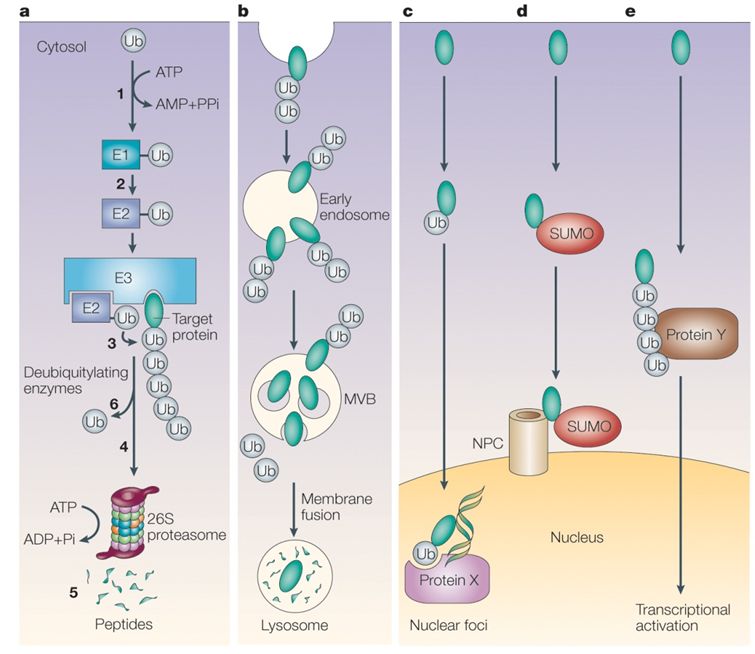
Figure 7.
Some of the different functions of modification by ubiquitin and ubiquitin-like proteins.
a: Proteasomal-dependent degradation of cellular proteins (see Figure 4). b: Mono- or oligoubiquitination targets membrane proteins to degradation in the lysosome/vacuole. c: Monoubiquitination, or d: a single modification by a ubiquitin-like (UBL) protein, SUMO for example, can target proteins to different subcellular destinations such as nuclear foci or the nuclear pore complex (NPC). Modification by UBLs can serve other, non-proteolytic, functions, such as protecting proteins from ubiquitination or activation of E3 complexes. e: Generation of a Lys–63-based polyubiquitin chain can activate transcriptional regulators, directly or indirectly (via recruitment of other proteins (protein Y; shown), or activation of upstream components such as kinases). Ub, ubiquitin; K, Lys; S, Cys (with permission from Nature Publishing Group; published originally in Ciechanover et al.83).